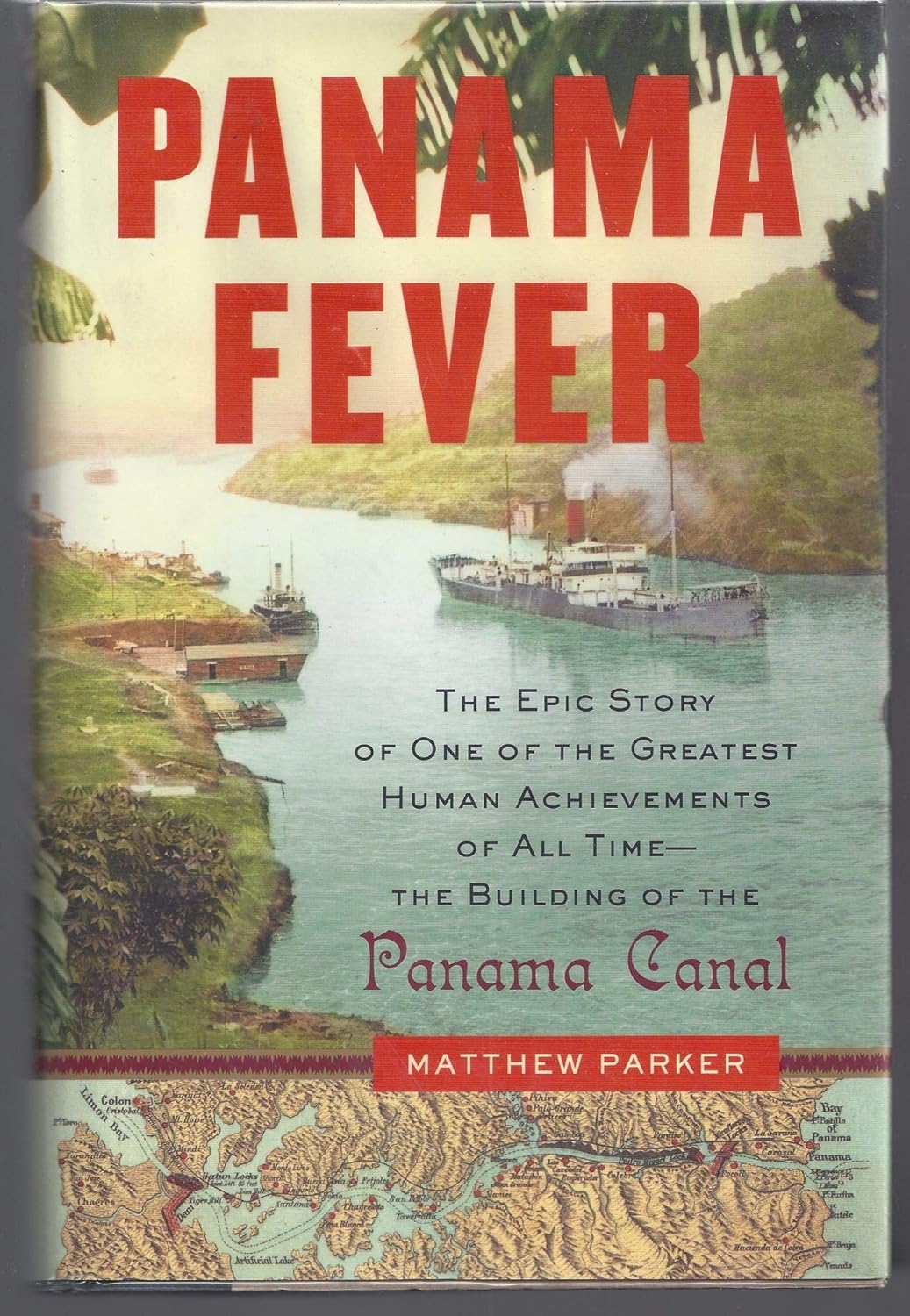
Armchair travel around the world!
Start your reading adventures with our FREE Reading Atlas.

- Around the World in 14 Books
- 7 Thrilling Book Series
- 6 Audiobooks That Are Like Theater For Your Ears



This thrilling historical account (560 pages) was published in March of 2008 by Doubleday. The book takes you to 1914 Panama. David read Panama Fever and loved it; it wouldn't be on our site if he didn't recommend it.
Bookshop.org is an online bookstore with a mission to financially support independent bookstores and give back to the book community.

In 1513, Spanish explorer Vasco Nunez de Balboa led a team across the Panamanian isthmus. At one point on that trip, he climbed a hill. Gazing one way, he could see the Pacific Ocean; the other way, the Atlantic.
From the top of that hill in the middle of Panama, he must have felt like he could almost reach out and touch the two. How hard could it be to connect one with the other?
For 400 years, ‘we should build a canal across Panama’ was easy to say. And the benefits are so obvious: Ships could sail right through (avoiding that nasty, dangerous trip down to the tip of South America). Every single ship would save a two-month journey. Think of the trade! The military advantages! And the money! So much money. What could possibly stop it?
Here is an incomplete list of facts that made building the Canal an extreme challenge:
First, there’s the land itself. It’s one of the most inhospitable places on earth. Over the 60 miles of Canal, there was jungle, mountains, and swamps. In the last century, we’ve built roads in dangerous, out-of-the-way places, but not in Panama.
Second, there’s the local wildlife. That part of the world is home to jaguars, venomous snakes, caiman, and bugs that like to burrow into human flesh to lay their eggs. All those animals will happily eat you, but the mosquito is the most dangerous — dense swarms of mosquitos, carrying yellow fever, which still has no cure.
Third, we must acknowledge the near-relentless rain. The rain is almost nonstop for eight months of the year, sometimes up to two inches per hour. Which brings us to three and a half: the landslides.
Fourth, where can crews willing to work these jobs even be found? It wasn’t a secret that it was life-threatening, back-breaking work. How do you attract them, and how do you keep them safe and healthy once they arrive?
And fifth, the politics. Everybody knows that when the Canal is finished, there will be money. So much money. Hand out all over the place.
And all of that was before the relatively modern problems of environmental impact and cross-contamination of species.
Despite these and other reasons, the Scottish, the French, and the Americans all attempted to control trade in Panama by getting the Canal built. The ultimately successful US effort started in 1904, and the Canal exists, so you know how it ends. But the story of how the Canal came to be is a very good story.
Panama Fever embraces the drama of the building of the Panama Canal. And may (intentionally) lead you back and forth between two opposing thoughts: ‘It is truly astonishing that this ever got done. This is a monumental piece of engineering.’ and ‘What ego! What pride! What delusion!’
Every one of this book’s 350 pages is engaging — a great story, well told.
The food is awful, Jan wrote, and cooked in such a way that no civilized white man can stand it for more than a week or two… Almost all the food is fried. They feed us fried green bananas, boiled rice, and foul-smelling salt fish. It rains so much that honest to goodness my hat is getting mouldy on my head… I haven’t had on a pair of dry shoes in weeks. — Matthew Parker
Wanna help us spread the word? If you like this page, please share with your friends.
Strong Sense of Place is a website and podcast dedicated to literary travel and books we love. Reading good books increases empathy. Empathy is good for all of us and the amazing world we inhabit.
Strong Sense of Place is a listener-supported podcast. If you like the work we do, you can help make it happen by joining our Patreon! That'll unlock bonus content for you, too — including Mel's secret book reviews and Dave's behind-the-scenes notes for the latest Two Truths and a Lie.
Join our Substack to get our FREE newsletter with podcast updates and behind-the-scenes info — and join in fun chats about books and travel with other lovely readers.

We'll share enough detail to help you decide if a book is for you, but we'll never ruin plot twists or give away the ending.
Content on this site is ©2025 by Smudge Publishing, unless otherwise noted. Peace be with you, person who reads the small type.